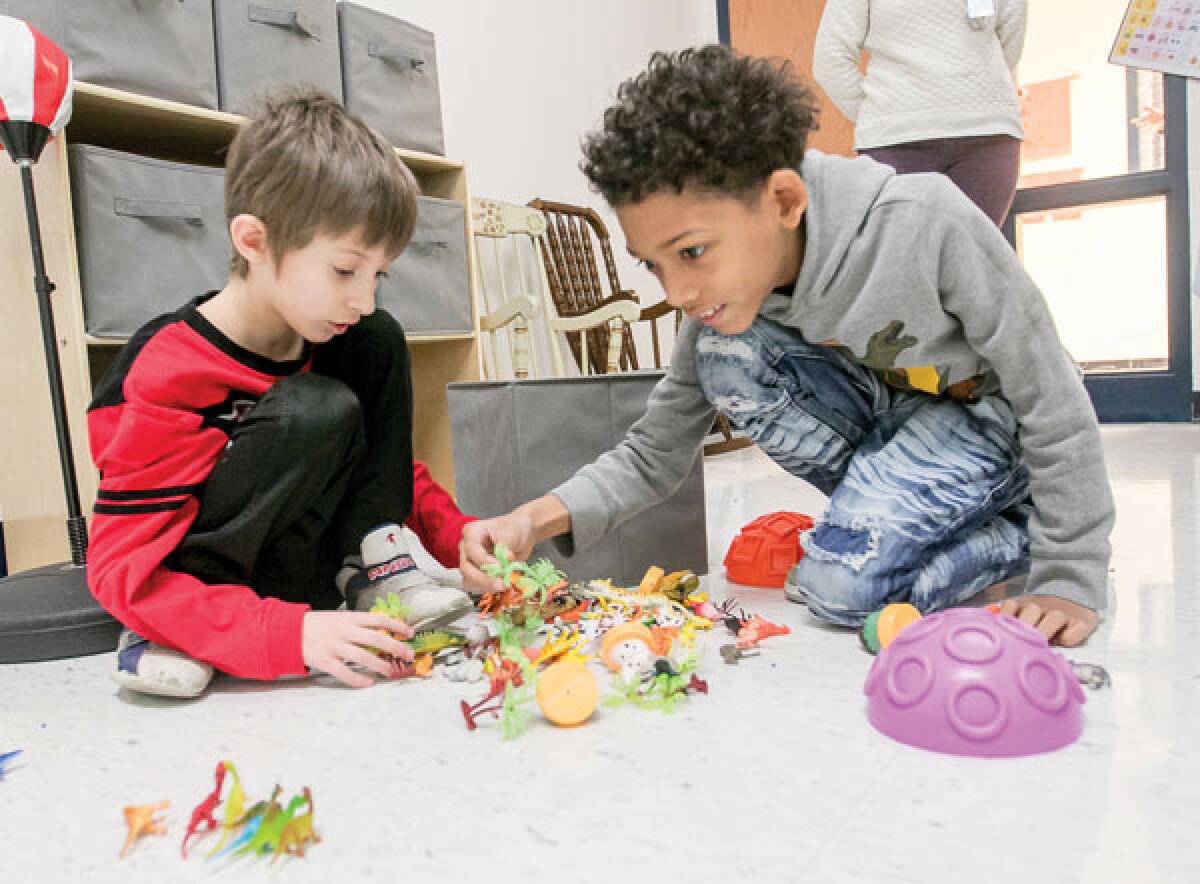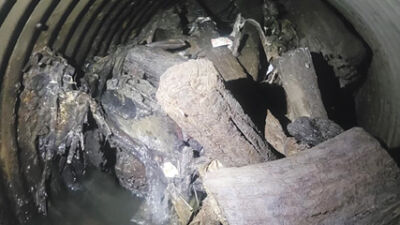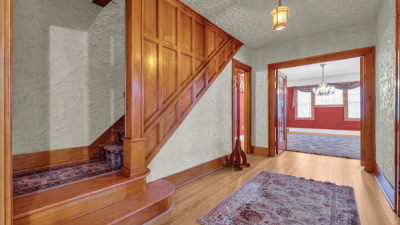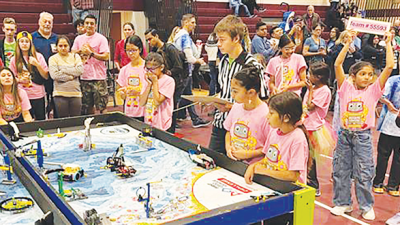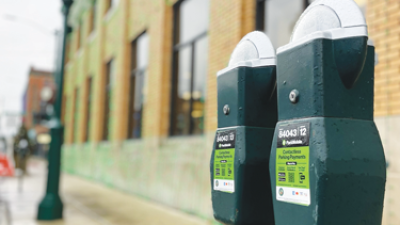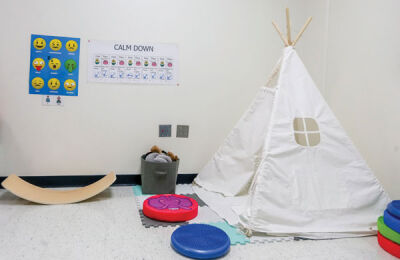
The Kment sensory room includes several pieces of equipment, including a tepee and calm-down chart.
Photo by Patricia O’Blenes
ROSEVILLE — Kment Elementary School special education teacher Kimberly Harvey and speech and language pathologist Kaela Calcaterra wanted to find a way to further help students with autism and sensory issues.
They came up with the idea to create a place where students could go when they needed to calm down and take a break from a stressful situation.
After securing grant money, Harvey and Calcaterra developed the Kment “sensory room” to provide students with a sense of calm and comfort when they experience emotional distress. An auxiliary office that wasn’t being used was transformed to create the sensory room at Kment.
“We’re trying to teach the kids coping skills,” district Special Education Director Teresa Tomala said. “We’re trying to give them a foundation to get appropriate coping skills.”
Harvey and Calcaterra received $500 from the Optimist Club of Roseville and $1,500 from Fredi the PizzaMan to purchase several items for the room, including a swing made from soft fabric, a tepee, punching bags, a bean bag chair, a weighted blanket and neck pillow, a small trampoline and more.
“Lots of students use it as an escape from sensory overload in the regular classroom,” Kment Principal Donovan Stec said. “This has been a huge success. It’s an oasis for them to leave the classroom and to where it’s a little bit smaller.”
There’s a “calm down” chart inside the room that helps students determine their feelings. Also stocked are hands-on manipulative materials designed to help the students get focused. One popular item is the floor’s sensory path, which includes plastic-like steppingstones that have different textures to help with balance. Sand also is a great stress buster for students.
Calcaterra said each student has a favorite area inside the room. While the sensory room was designed for students with autism and sensory issues, the room is open to all students. Sometimes students throughout the building can enjoy the room as a reward for good behavior.
The students usually stay in the sensory room for about 10 minutes and are always accompanied by an adult. They return to their classrooms once they have regrouped. Sometimes it’s just one student using the room, and at other times, it’s open to a small group of students.
“They have to clean up and put everything away,” Harvey said.
On the morning of Feb. 1, Kment first grader Landon Palomba and third grader Javeon Hines stopped inside the sensory room with Harvey and Calcaterra. The students immediately jumped on the sensory path before taking out a bucket of small plastic animal toys for imaginative play. Palomba lined up several of the pieces on the floor while naming them one at a time.
“Look at this,” Hines said to Calcaterra. “It looks like a wolf.”
First grader Anara Frison opted to sit in one of the room’s rocking chairs during her visit and then hung out quietly. While neither Frison nor Palomba wanted to try out the swing, Hines took a quick spin on it.
“That was fun,” he said.
“Hey, Javeon, come in the house,” Palomba said as the pair checked out the tepee.
Green Elementary School and Roseville Middle School also have sensory rooms. At the Jan. 30 Roseville Community Schools Board of Education meeting, Stec and Tomala gave a presentation on the sensory room to the school board and central office administrators.
Fredi the PizzaMan is a charity that focuses on equipping sensory rooms in schools and spreading autism awareness and acceptance. The Optimist Club of Roseville is a community service organization dedicated to serving the youth in its communities.
 Publication select ▼
Publication select ▼